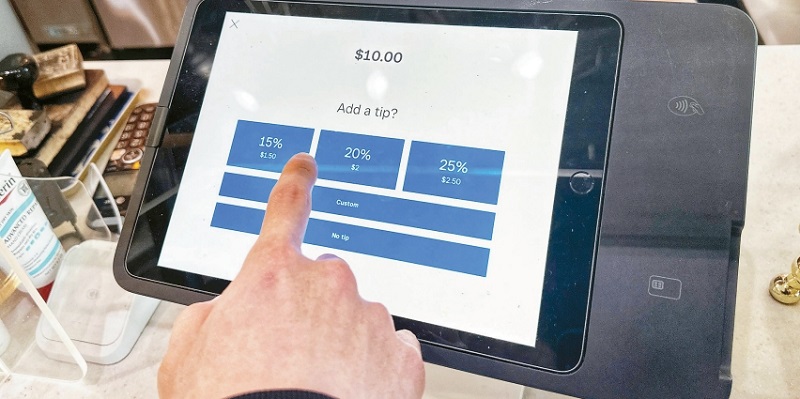A 33-year-old Korean American who ordered food through the delivery app DoorDash, smiled bitterly. He had always tipped after the food was delivered, but when he pressed the “continue without tip” button, a screen warned him that “Orders with no tip might take longer to get delivered — are you sure you want to continue?” “Tipping is about paying as much as you like after the proper service is provided,” Kim said, “and I’m tired of the practice of expecting a tip even before delivery.”
Another Korean American office worker was outraged by a receipt she received from a restaurant. At first, she thought it was a nice restaurant because it said 2%, 3%, and 5%, but when she took a closer look, she realized that they were asking for an additional tip on top of the automatic gratuity. “The demand for gratuity has become more and more out of control,” she said.
Consumers are increasingly dissatisfied with the increasingly excessive tipping culture. The amount of the tip is a minor concern, but the backlash against the tipping culture is that it has become an expectation. As a result, consumers are experiencing “tip inflation (tip + inflation).”
In a recent Pew Research Center survey of 11,945 adults conducted in August, nearly seven out of 10 (72%) said that more places are asking for a tip compared to five years ago. These responses were common across the country, regardless of region, Pew said.
Experts attribute the rise in tipping to the POS systems that many businesses are now installing in their stores. Simply installing a digital payment kiosk is a natural way to ask customers for a tip, and many businesses are using this method, they added.
However, the tipping culture has spread to cafes, coffee shops, and fast food restaurants, where tipping is usually not required, and consumers are becoming increasingly discontented. Furthermore, frequent tipping demands have made it difficult for consumers to distinguish between where they should and shouldn’t tip.
In the survey, only 34% of respondents, or one in three, said they were clear on when to tip. Only 33% said they had a good idea of how much to tip for service. Consumers are most frustrated with being asked for a suggested tip of as little as 10% and as much as 18-25%.
BY HOONSIK WOO, JUNHAN PARK [woo.hoonsik@koreadaily.com]





